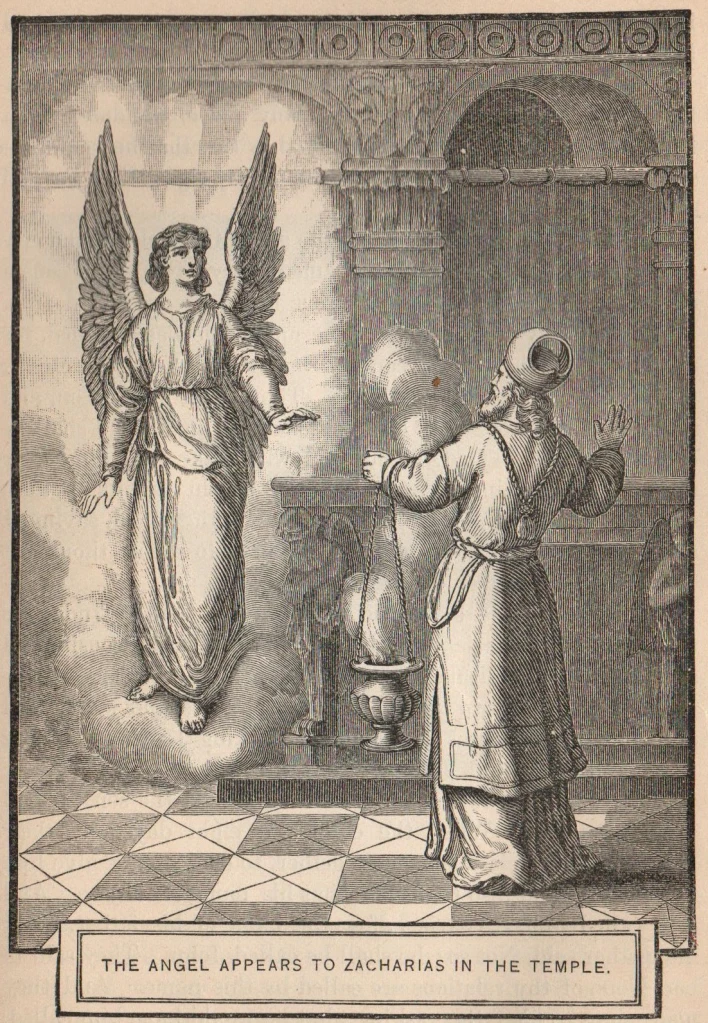Judaism and other religions use incense and have for centuries. It was used, especially, to override the smell of burning flesh in the Temple worship and its daily sacrifices. The recipe for it was carefully prescribed in the Law of Moses (Exodus 30:34-38). Although there is no evidence that we have at this time for the use of incense in the early Christian churches or even in synagogues, the earliest liturgies that we have copies for in the history of the Church include lengthy prayers related to the offering of incense at multiple times during that worship. In the Western Church, it was used not so very often as in Eastern Churches, due to how far the West was from the source of that incense. But its use was prescribed and where it could be had, it was used.

The use of incense did not end at the time of the Reformation, but continued in a less fulsome use than before. Stephen Hollander comments in his tract on incense, “Following the Reformation, incense continued to be used in the churches, as evidenced by historical records of churchwardens’ accounts showing the purchase of incense. There are also numerous specific records of ecclesiastical use of incense. Thus, for example, the chapel of Bishop Lancelot Andrewes (d. 1626) housed a “triquetral censer, whereon the Clerk put incense at the reading of the First Lesson.” Incense is reported to have been used at the consecration of a church by Archbishop Sancroft in 1685, and at the coronation of George III in 1760.”
In addition, George Herbert (1593-1633), in his advice to clergy, writes, “The Country Parson hath a special care of his Church, that all things there be decent . . . that the Church be swept, and kept clean without dust, or Cobwebs, and at great festivals strawed, and stuck with boughs, and perfumed with incense.” Other evidence from that time, “We find from the . . . accounts that incense was used at Dr. Challoner’s funeral” (Carr, 91). Archbishop James Ussher and Dr. Challoner were friends and cousins, and it was Challoner’s wish that Ussher marry his daughter. Ussher is known as a friend of Puritans and Presbyterians and one of the greatest scholars of the Anglican Church of Ireland who transcended both high church and low church categories. That he was present at the funeral and, therefore, approved on some level to the use of incense seems reasonably evident.
To ask the question, “Why Incense?” is to begin the matter, arguably, from the wrong way round. Here we might point out a difference between what’s called the “regulative principle” which is a feature of Scotch Presbyterianism that has entered, roughly, into the “tradition”, so to speak, of American Evangelicalism (by at least tendency of thought rather than always by hard and fast restrictions). Regulative Principle = Worship is regulated by what Scripture overtly lays out. Contrarily, the “normative principle” states that those things not forbidden by the Bible are permitted in worship. Of course, for Lutherans and Anglicans, incense is not forbidden and is, therefore, used by some.
Through texts such as Isaiah 6 and the Book of Revelation we see that incense is described as integrally near the Throne of Grace to which we are to draw near with boldness during Christian worship. While never commanded, incense is never disallowed in the New Testament. It is noteworthy, and may never have occurred to you, that worship in the Old Testament involved all five senses, tasting and touching the sacrifice, seeing the Temple, hearing the singing, and smelling the sacrifice and the incense. There is no reason to be less involved in that worship which is supposed to be “in Spirit and in Truth” and which is the hallmark of the post-Messianic sacrifice of praise and thanksgiving. There is no reason to suddenly limit so-called biblical worship to nothing more than eyes and ears (hearing sermons and singing) and, very occasionally, touching and tasting when the Lord’s Supper is offered. There will always be smells in a church, of course, (often rather unique to that particular building, maybe a little musty or, on the other hand, overly sanitized). Yet, whatever the particular smell of the building, incense provides a smell universally distinct, odiferous and offered to God in the presence of all worshipers in all churches throughout all church history as far as we have records. That is to say, incense is that biblical smell passed down by Christian tradition to make every church building smell approximately the same – just as we hope that there is reasonably the same spiritual content in the sacred music (even if the notes and traditions vary) and the same divine truth proclaimed from the pulpit (even if the languages in which it is proclaimed varies), and just as we hope that the Lord’s Supper is, at the very least, the fruit of the wine and baked flour meal in every church calling itself Christian.
By the way, do you know what Pocahontas and T.S. Eliot have in common? They were both born in America and neither was raised Anglican. They were both baptized in the Anglican church and ended their lives in Great Britain. Indeed, the Virginia Company’s first intention (although it quickly moved away from this goal) was the propagation of Christianity in the New World. Chapman’s “Baptism of Pocahontas” is below.
